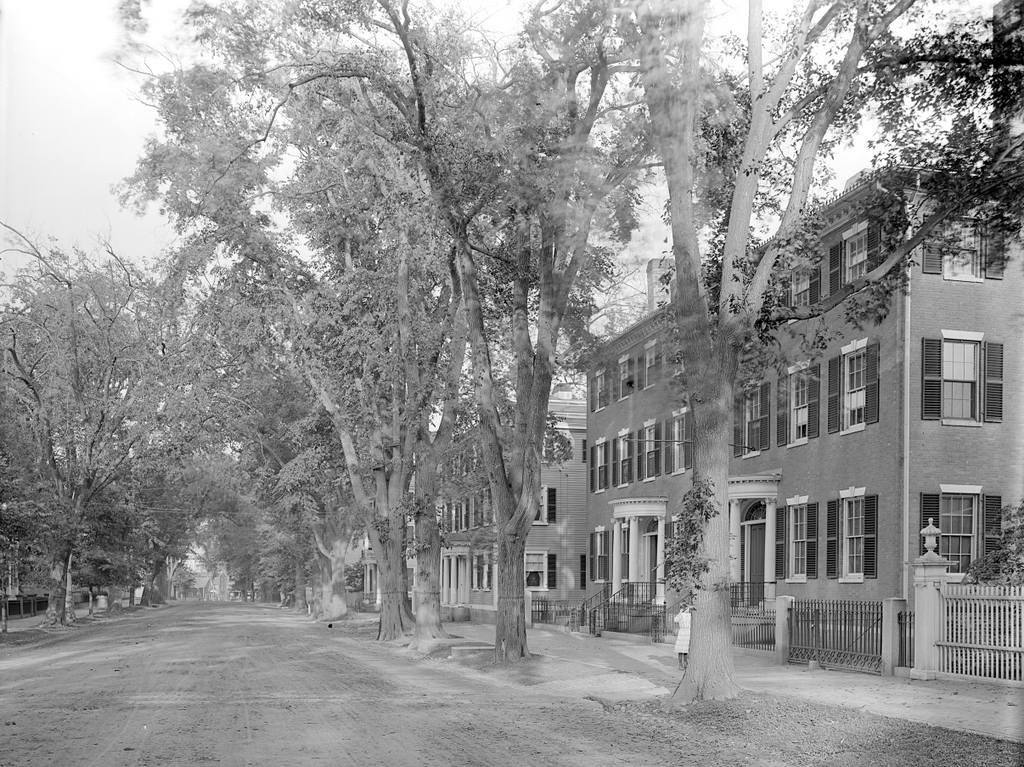The view looking east on Chestnut Street from near Pickering Street in Salem, around 1890-1910. Image courtesy of the Phillips Library at the Peabody Essex Museum, Frank Cousins Glass Plate Negatives Collection.
The scene in 2023:
These two photos were taken from near the same spot as the ones in the previous post, but facing the opposite direction. This view of Chestnut Street, looking east toward Cambridge Street, features a number of early 19th century homes. Starting in the foreground on the right side is a double house at 21-23 Chestnut Street, which was built in 1814-15 for John and Henry Pickering. They were the sons of Timothy Pickering, a prominent politician who served in several different Cabinet positions, including as Secretary of State under George Washington and John Adams.
Although built for the Pickering brothers, they evidently did not own these houses for long, because each properly changed hands several times over the next few decades. By the 1830s, the house closest to the foreground, at 23 Chestnut, was owned by Robert Stone, while the adjoining house at 21 Chestnut was owned by Elisha Mack. In 1833, during President Andrew Jackson’s visit to Salem, Robert Stone hosted a reception here at his house, which Jackson attended along with Vice President Martin Van Buren, several Cabinet secretaries, and other dignitaries.
Further in the distance on the right side of the street is 19 Chestnut, which is visible in the center of both photos. This three-story, wood-frame house was built around 1805, and it was originally the home of merchant Israel Williams. Later in the 19th century it was owned by another merchant, Henry W. Peabody, and then in the early 20th century it was owned by architect William G. Rantoul.
Today, more than a century after the top photo was taken, these houses are still standing, as are the other ones further in the distance on both sides of the street. Chestnut Street survives as a well-preserved example of Federal-style architecture, and it is the centerpiece of the Chestnut Street District on the National Register of Historic Places. However, this scene is also notable because of the elm tree that still stands in the foreground. During the 19th and early 20th centuries, the street was lined with elms. Most of these were subsequently lost, likely due to hurricanes and Dutch Elm Disease, but this tree has survived, and it is still easily recognizable from its appearance in the top photo.






